Posts Tagged: State Park
Not a Good Time to Be a Monarch Caterpillar
Migrating monarchs are fluttering daily into our yard in Vacaville, Calif., one by one, two by two, three by three, and four by four, for a little...
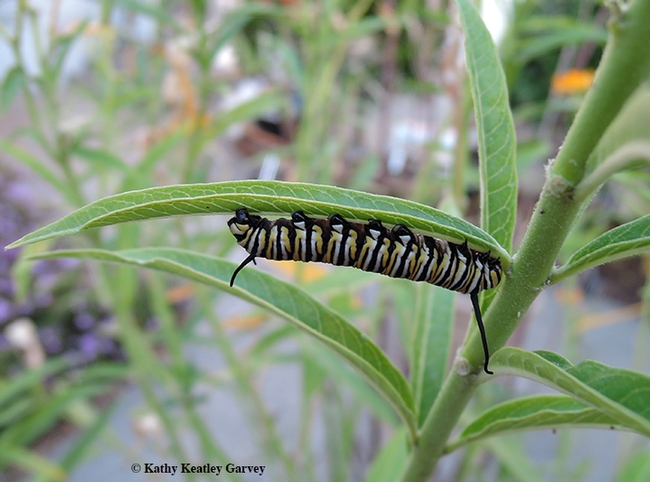
A monarch caterpillar munches on tropical milkweed in Vacaville, Calif. on Friday, Oct. 27. (Photo by Kathy Keatley Garvey)
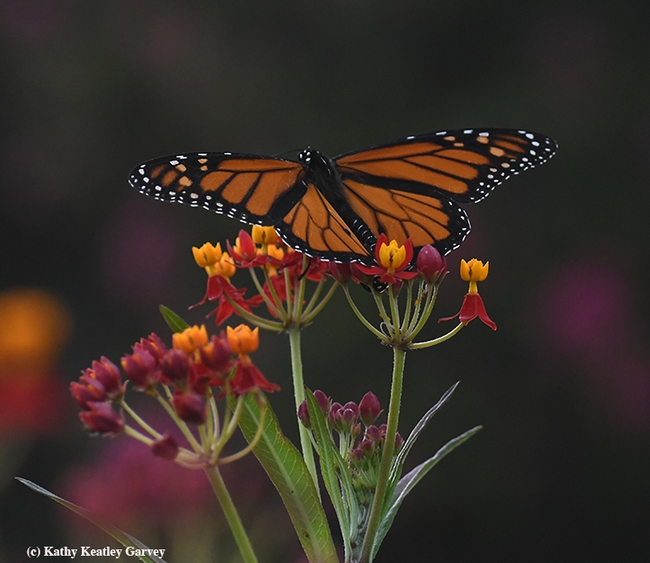
Pacific Northwest monarchs began migrating to their overwintering sites along coastal California in last August and early September. This one touched down on milkweed in Vacaville, Calif. on Sept. 12. (Photo by Kathy Keatley Garvey)
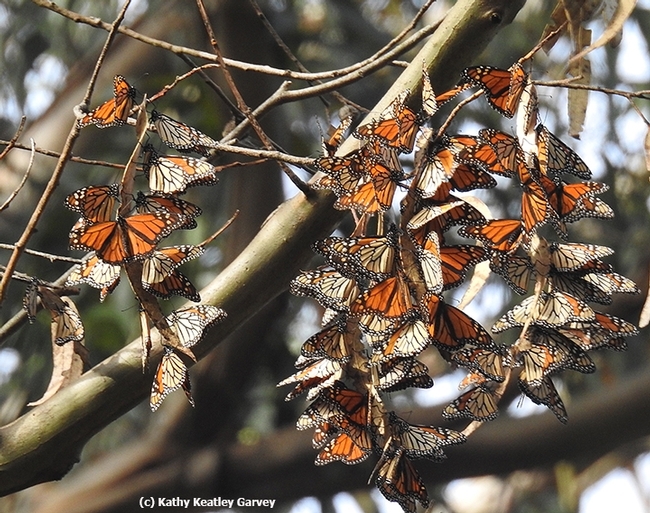
This was the scene Nov. 14, 2016 at the Natural Bridges State Park's Monarch Grove Butterfly Natural Preserve, Santa Cruz. They were overwintering 80 feet high in a eucalpytus tree. (Photo by Kathy Keatley Garvey)
Monarchs: Should They Go or Should They Stay?
So here we are, planning a long-awaited 113-mile trip from Solano County to Natural Bridges State Park, Santa Cruz, to admire and photograph the...
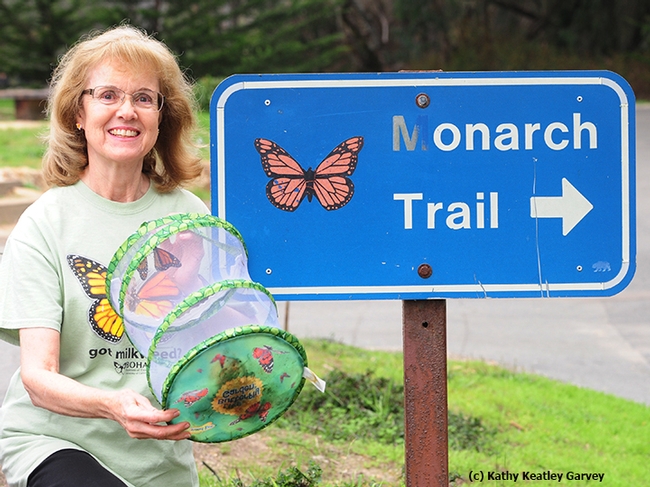
Marilyn, a butterfly enthusiast from Fairfield, ready to release two monarchs at the Natural Bridges State Park's monarch sanctuary. The butterfly mesh habitat is from the Bohart Museum of Entomology, UC Davis. The "Got Milkweed" monarch t-shirt is also from the Bohart. (Photo by Kathy Keatley Garvey)
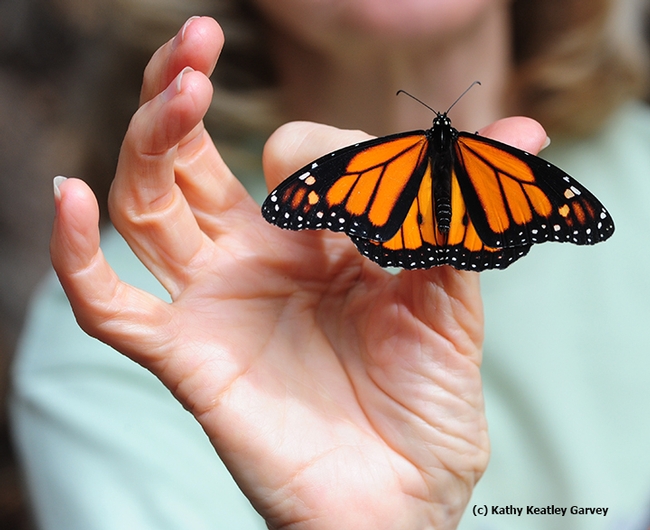
A male monarch, born and bred in Vacaville, lingers before fluttering off to the monarch sanctuary. (Photo by Kathy Keatley Garvey)
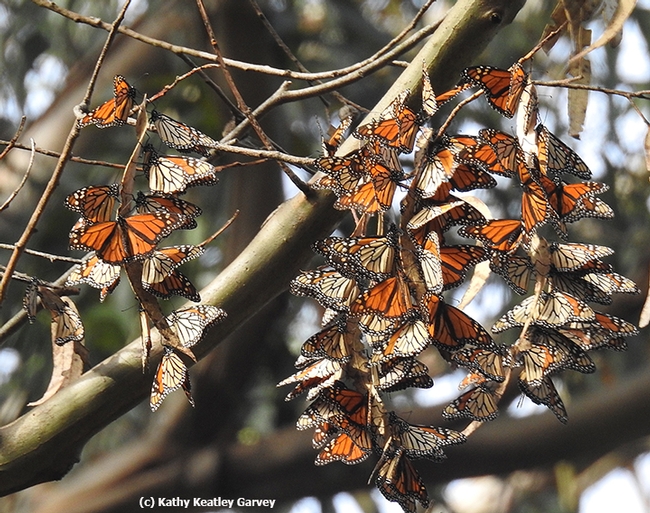
A monarch cluster 80 feet high in a eucalyptus tree at the Natural Bridges State Park butterfly sanctuary. (Photo by Kathy Keatley Garvey)
Welcome Back, Monarchs!
It will be a monarch-kind of day. And why not? Monarch enthusiasts are eagerly awaiting the "Welcome Back Monarchs Day" on Sunday,...
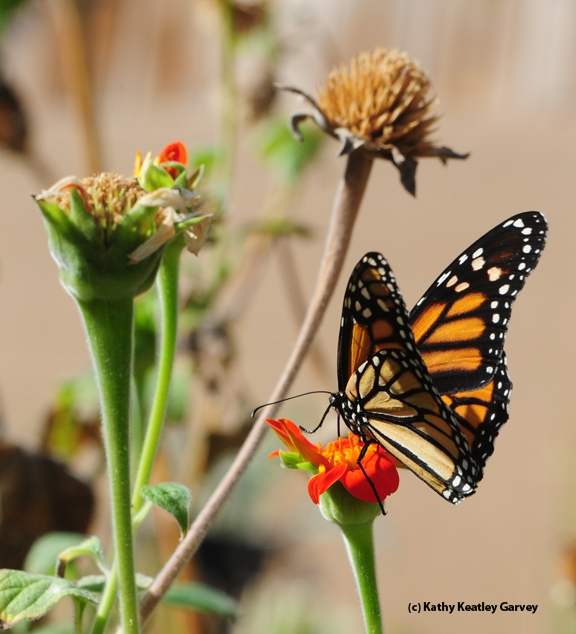
A monarch lands on a Mexican sunflower (Tithonia) in Vacaville, Calif. It may head to an overwintering site in Santa Cruz. (Photo by Kathy Keatley Garvey)
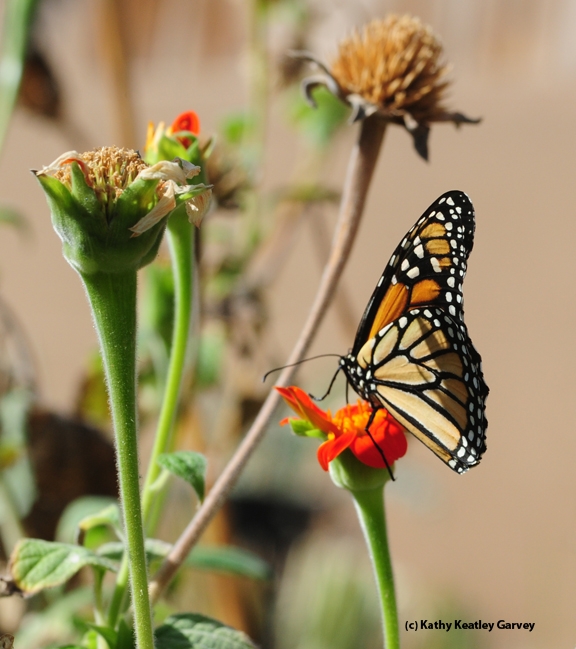
The monarch adjusts its position. (Photo by Kathy Keatley Garvey)
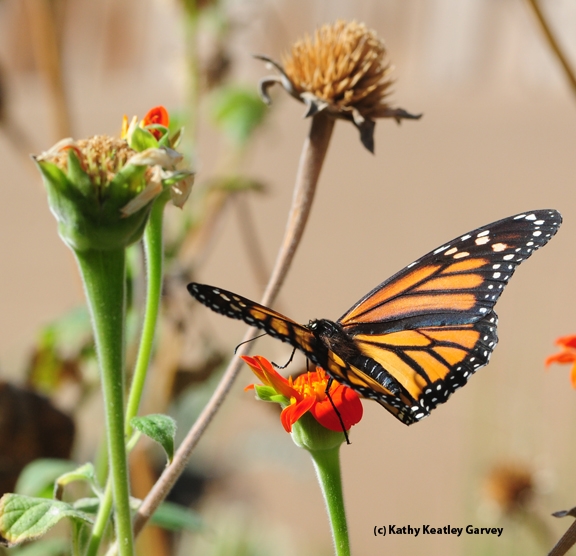
The monarch continues to feed. (Photo by Kathy Keatley Garvey)

The majestic monarch in all its glory. (Photo by Kathy Keatley Garvey)
Jack London State Park Visit
Sometimes you just have to get out of the house! Sometimes you have to get out of town! I did. I ran away to the Jack London State Park in Glen Ellen and took a docent led tour of the Cottage Garden.
The park is what remains of the seven ranches referred to as Beauty Ranch that author Jack London and his wife Charmaine purchased beginning in 1905 in The Valley of the Moon. The couple built their dream home, Wolf House, on the property, but shortly before they were to move in it burned to the ground. They lived in the Cottage until 1916 when London died. Charmaine continued to live in the cottage until 1934 when the House of Happy Walls was completed in 1934.
Jack London took up organic gardening while living at Beauty Ranch. He had a vineyard on the property, but there is no mention of him making wine.
The home farm portion of the ranch became a dude ranch between 1944 and 1946. It was operated by Eliza London Shepard, Jack's step sister and ranch manager.
Charmaine died in 1955 and the property was turned over to the State in 1960. In 1997, Jenny Randal took on the job of reviving the Cottage Garden. She remains today and led our tour.
Jenny treated us to a power point presentation of photos going back to the early twentieth century when Jack and Charmaine London created Beauty Ranch. Once Wolf House was destroyed and they were forced to make their home at the Cottage, they created the garden that Jenny has been working on for over fifteen years. Her research is based on photos, correspondence, and writings of the London’s.
The garden area was surrounded in those days by a snow fence. Perhaps this kept the deer and assorted critters such as bobcat and mountain lions away. The old photos show several large live oak and black locust trees and one huge palm tree adjacent to the garden. Most of the black locust trees are gone, but several young ones remain with the oaks and the even grander palm tree.
A pond was built in the garden and it was surrounded by cannas and Shasta daisies. It was filled with Koi then as it is now.
The daisies may have been a gift from their creator Luther Burbank, another resident of Sonoma County at the time. There are photos of the two men together on the Burbank website, but Jenny does not think the two men were close friends.
The garden that is there today is a "cultural garden" meant to depict what was probably planted there at the time the London's were in residence. If so, the list in a long one and includes many of the plants I have in my own garden. Even before the tour started I made a list of what I saw planted there. I think you will find most of these familiar to you:
yarrow, roses, California poppies, Salvia, daylilies, Clivia, iris, Agapanthus, peony, Nepeta, Bears Breech (Acanthus mollis), society garlic, Euphorbia, rosemary, callas, periwinkle, violets, nasturtium, bamboo, Shasta daisies, Santa Barbara daisies, scented geraniums, Penstemon, agave, ginger, Buddleia, lilac, Pride of Madera, fortnight lilies, lavender, Cistus, verbena, lungwort, nut sedge, California fuchsia, breath of heaven, and Gaillardia.

California poppy. (photo by Jennifer Baumbach)

